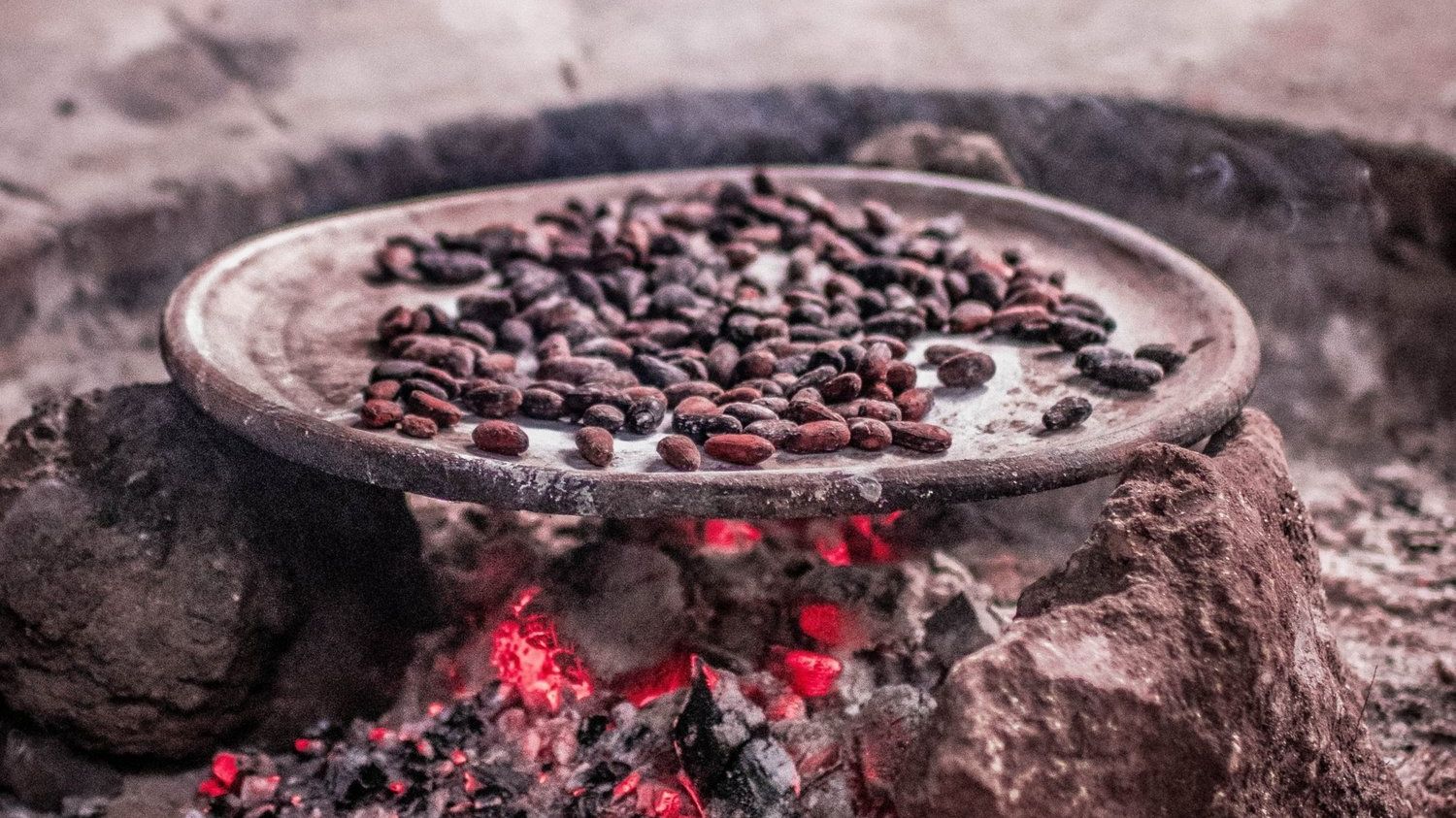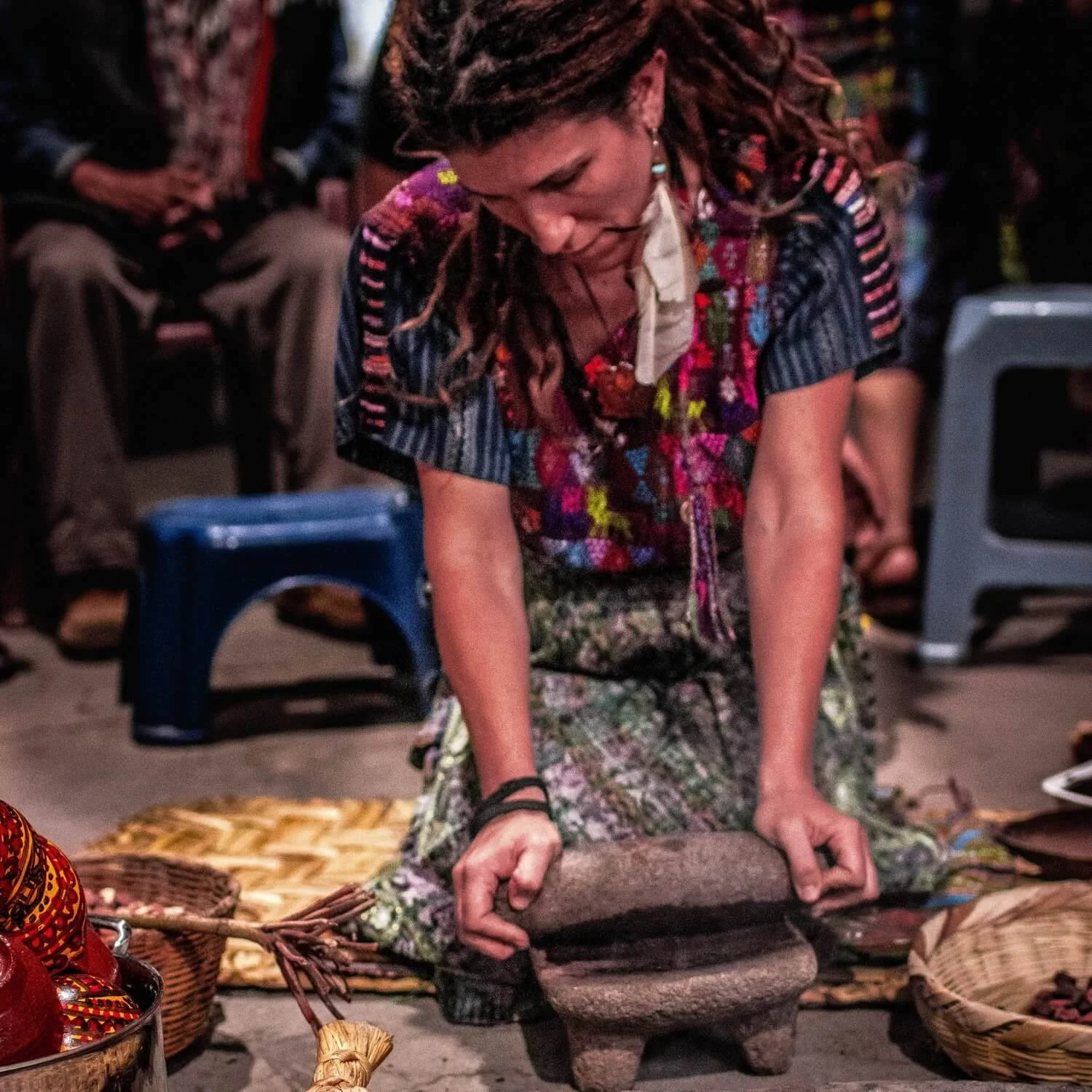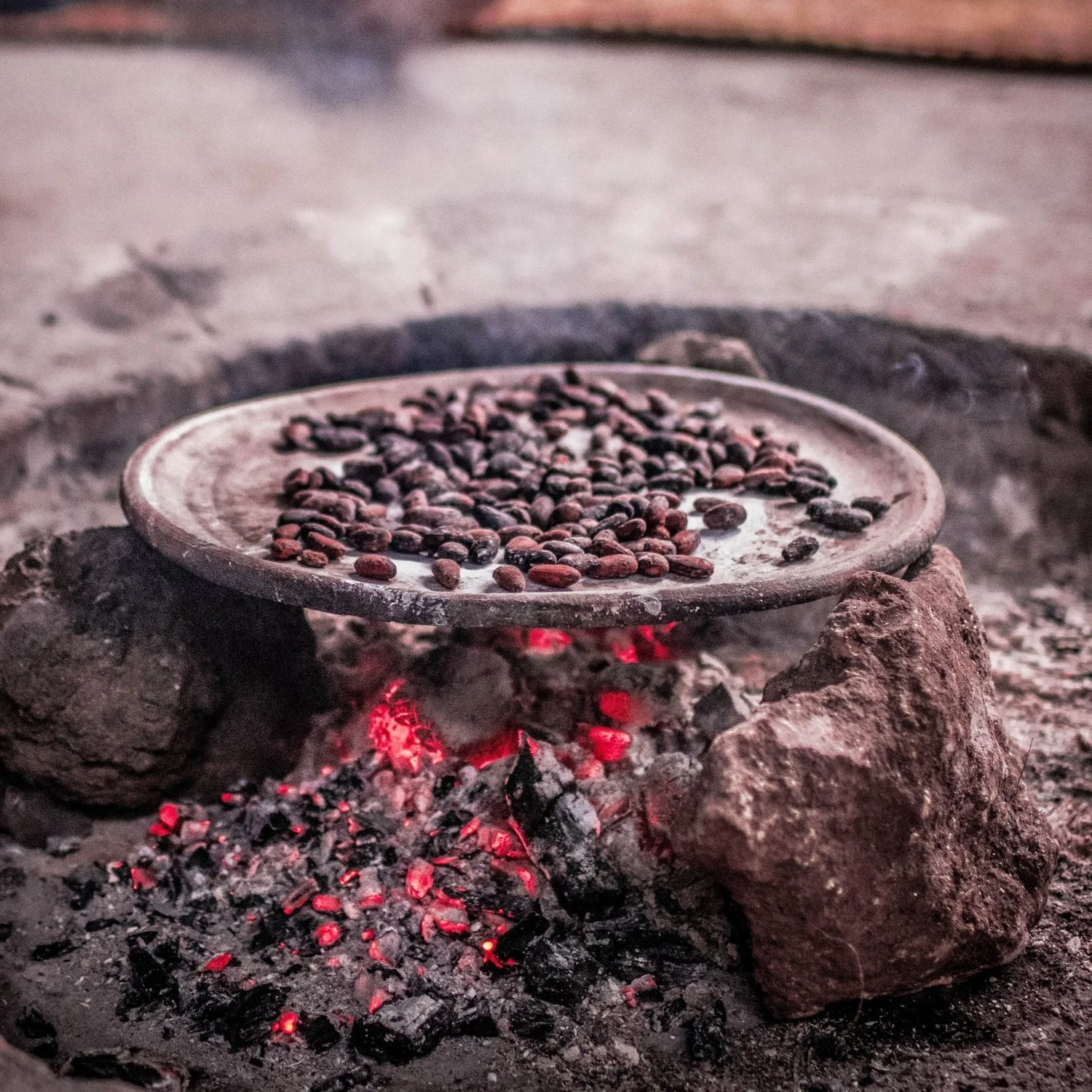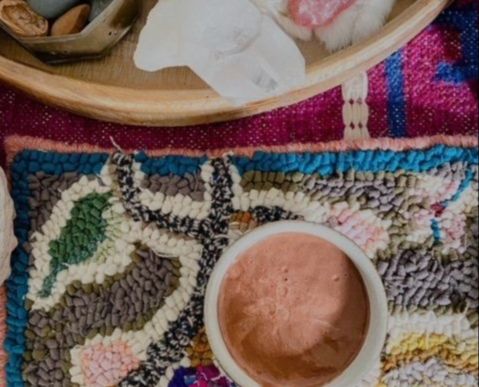Ceremonial Cacao vs. Chocolate. An Exploration
Nov 12, 2024
Hello friends! In light of so many questions regarding cacao and what makes ceremonial cacao different than chocolate at the grocery store, I am going to share some very important differences between cocoa and cacao.
As I share about cacao especially ceremonial cacao, it is very important that we honor all of the indigenous people who have worked with cacao as the heart of these discussions here because they carry this medicine and have been since the beginning. Protecting it from harm and keeping the wisdom within the medicine alive. The spirituality that is carried with sacred cacao is not separate. It is one and the same. All medicine of the Earth is sacred.
What is ceremonial cacao vs. cocoa or chocolate?
Let’s examine some basic differences between ceremonial Cacao and chocolate.
Chocolate and Cocoa
Chocolate is a one of the most cherished things in society. And for many reasons. Some just love that it tastes delicious, others love the hip trend of its superfood health benefits There is research out there telling us how dark chocolate is good for our hearts when it is 70% or higher. This may be true that it has some benefits but it is still missing many components for us to be receiving the full medicinal benefits of it.
Most chocolate you see at the grocery store today has been commercially farmed. This is a very important and key difference between ceremonial grade cacao and commercially grown cacao. To briefly help you understand, Commercially grown cacao is grown on mono-cropped farms that deplete the soil and are typically heavily sprayed, altering the integrity and makeup of the cacao. With ceremonial great Cacao, you will find that the cacao trees are grown with ethically sound farming methods to support the entire ecosystem encouraging life and health for the plants and all of the living creatures and insects around it, including the farmers and producers. You can read all about the farming methods and differences here.
s far as processing commercially, after fermentation, the beans are processed at high temperature for long periods of time. This depletes most, if not all of the nutritional value, including killing healthy living enzymes and polyphenols. It also changes the molecular structure of the bean which in itself leaves many questions about how “good” it actually is for us.
After heating it the beans, they separate all of the natural oils, fats, and fibers to make this amazing plant into a powder form. We are then left with a very skewed version of cacao. And I would go as far as saying it is no longer cacao. It is something completely different.
Now we have all the parts of the plant separated. Not whole. Processed and overheated….
But now let’s say that they were to make this into a chocolate bar, They would still do this whole process except at the end, they would add in the fats they originally took out again, along with other emulsifiers. Most of which are not good for our health.
These emulsifiers such as carb-oxy-methyl-cellulose and polysorbate-80, have been shown in animal models to powerfully disrupt the gut microbiome and degrade the mucosa (according to Nature Research Journal, Dietary Emulsifiers Feb 2015)
*Note- Now Cacao Superfood powder & organic Cacao bars, although it may be organic, “raw” and a “superfood” it is also many times highly processed to commercial standards, removing the bean’s natural fat (cacao butter). This means that many living enzymes, healthy fat and most of the subtle energetic properties of cacao have been destroyed. This can not only be hard on our digestive tract and liver…. But the indigenous wisdom keepers say that it also separates the essence when they separate the fats.
Cacao nibs are minimally processed but is not always grown with ethical standards
Ceremonial Cacao
Now ceremonial cacao is minimally processed. It is made with heirloom strains using methods of sustainability, earth consciousness, and social ethics such as agroforestry and supporting small farmers with fair compensation. You can read more about the farming methods here.
When the farmers pick the cacao fruit, they bring it to the area where they spread the beans out in the sun. Once the cacao is picked it takes 6-10 days to ferment. Then it is ready for roasting at low heat.
Many if not most companies do there roasting on hot plates. Many Indigenous people including the Tz’utujil family that I work with use a clay plate over the sacred fire to do their roasting.
After the roasting, comes the peeling of the husks. Which is done by hand. Then begins the grinding of cacao. Most companies need to do this in a large machine due to the quantity they work with, but traditionally and still done today by the Tz’utujil and other indigenous people, they work with a metate. A metate is a large stone that is used to grind the roasted beans. It is a sacred tool….
The 3 stones: the base stone, the metate grinder, and the roasting stone also represent the sun, moon, and earth. The elders say that once it’s on the stone with the fire, it greets the ancestors, the cosmos, with the rising smoke. This honors this precious life- this powerful universe. The grinding makes a paste which is then scraped into a mold to harden.
When you receive ceremonial cacao from me, this is what you are receiving. It is not candy. It is a powerful medicinal plant ally. Ceremonial cacao is sacred. It is not junk food. Learn about the physical, emotional, and energetic benefits here.
As an herbalist, I suggest you treat this plant like all Earth medicine…. with reverence and respect. Honoring those who have learned the ways of this sacred medicine before us, who are here now, and kept it alive…..and honoring the beautiful earth mother who provides all the healing we need. May we all bow to her magnificence.
In Love & Light~
FreeDom




